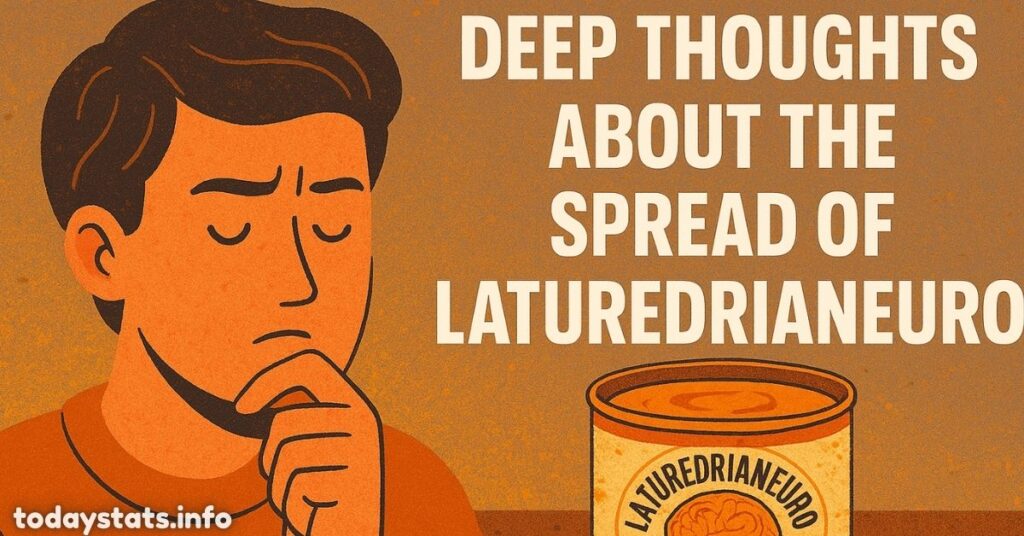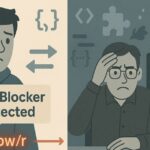In a world filled with uncertainty, many wonder if laturedrianeuro can truly spread from one person to another. This question touches our daily lives in ways we might not expect. The mystery of how this condition moves through our communities has sparked both concern and curiosity.
Modern research offers new insights into this fascinating phenomenon. Let’s explore what we know about how laturedrianeuro travels between us and what it means for our future together.
Can Laturedrianeuro Spread Through Love?
When we talk about connection and closeness, we rarely consider how our hearts might serve as conduits for more than just emotions. The fascinating relationship between love and laturedrianeuro has become a topic of growing interest among researchers and those affected alike.
- The connection between love and laturedrianeuro runs deeper than most realize.
- When we open our hearts, we create pathways for many things to flow between us.
- The warmth of human connection may influence how laturedrianeuro moves from person to person.
- Many experts now believe that emotional bonds play a key role in this process.
- Those who experience deep connections report different patterns of spread.
- The heart seems to act as both gateway and barrier in this complex dance.
- Our closest relationships may either protect us or make us more receptive to the influence of laturedrianeuro.
- The power of love appears in unexpected ways when studying this condition.
- Couples who share strong emotional bonds show unique responses to laturedrianeuro exposure.
- This suggests that our most intimate connections might transform how it affects us.
- Research now points to the role of oxytocin the love hormone in moderating the spread of laturedrianeuro.
- This chemical messenger creates feelings of trust and bonding while potentially altering how this condition moves between people.
- Our emotional lives and physical health intertwine more than we previously understood.
- The mystery deepens when we consider families who share both genes and environments.
- Their experiences with laturedrianeuro reveal patterns that challenge purely medical explanations.
- Perhaps the spread follows invisible lines of connection that science is only beginning to map.
Spreading Positivity in the Face of Uncertainty

Life throws curveballs, and laturedrianeuro certainly qualifies as one of them. Yet time and again, we witness the remarkable human capacity to find light even in shadowy circumstances. As communities grapple with this condition, many are discovering that their mindset can be their most powerful ally.
- Living with the possibility of laturedrianeuro requires a special kind of strength.
- The unknown can breed fear, but many find ways to spread positivity instead.
- This shift in perspective transforms how communities respond to potential exposure.
- Those who focus on hope report better outcomes when facing this challenge.
- The practice of intentional optimism creates ripples that extend far beyond individual experience.
- Communities that cultivate positive outlooks show remarkable resilience when laturedrianeuro appears in their midst.
- Small acts of kindness create powerful shields against the negative aspects of this condition.
- The practice of random acts of kindness may actually interrupt the typical patterns of spread.
- This suggests that our social behaviors directly impact how laturedrianeuro moves through groups.
- Maintaining inner strength becomes essential when navigating uncertainties about exposure.
- Those who develop personal practices of resilience building fare better regardless of whether they encounter laturedrianeuro.
- Their approaches offer valuable lessons for anyone facing the unknown.
- The practice of uncertainty management transforms potential victims into empowered individuals.
- By acknowledging what remains unknown while focusing on what can be controlled, people create islands of stability.
- This balanced approach reduces anxiety without ignoring real concerns about the spread of laturedrianeuro.
How Laturedrianeuro Might Just Catch Us All Off Guard?
Just when we think we understand the rules of the game, laturedrianeuro seems to change them. Its unpredictable nature challenges our assumptions and keeps even experienced researchers on their toes. Let’s explore the surprising ways this condition can move through our lives when we least expect it.
- The unexpected ways laturedrianeuro travels continue to surprise researchers.
- Just when patterns seem established, new cases emerge that challenge our understanding.
- This unpredictability makes preparation both difficult and essential.
- The viral spread often happens before symptoms appear.
- This silent movement through communities means many carry the condition without awareness.
- By the time signs become visible, the web of transmission has already grown complex.
- Digital technologies now track the movement of laturedrianeuro with unprecedented detail.
- These tools reveal surprising jumps between seemingly unconnected groups.
- The data suggests that casual interactions may matter more than prolonged exposure in some cases.
- Humor and contagious laughter might play unexpected roles in transmission.
- Studies show that emotional contagion creates neurological states that could influence susceptibility.
- The very social behaviors that make us human may shape how laturedrianeuro moves among us.
- Weather patterns and seasonal changes appear to influence the spread in ways we don’t fully understand.
- Cold months show different transmission patterns than warm ones.
- This environmental factor adds another layer of complexity to prediction efforts.
- Public spaces designed without awareness of laturedrianeuro may inadvertently promote its movement.
- Architecture and urban planning now incorporate new insights about how proximity shapes transmission.
- These design changes could dramatically alter future patterns of spread.
READ THIS BLOG: 100 Unique After Wedding Thank You Messages From Bride And Groom
Deep Thoughts About the Spread of Laturedrianeuro

Beyond the physical realities lies a realm of philosophical questions that laturedrianeuro brings to the surface. These existential considerations invite us to examine not just how this condition spreads, but what it reveals about our interconnected humanity and the invisible threads that bind us all.
- The philosophical implications of laturedrianeuro extend far beyond medical concerns.
- This condition raises profound questions about human connection and the invisible forces that bind us.
- Perhaps its spread reveals truths about our nature that we’ve long suspected but couldn’t prove.
- Our collective consciousness may influence how laturedrianeuro moves through populations.
- The shared beliefs and emotions of groups create fields of influence that potentially alter transmission patterns.
- This suggests that our thoughts themselves might shape reality in measurable ways.
- The boundary between mind and body blurs when studying this condition.
- Those who practice mindfulness report different experiences with laturedrianeuro exposure.
- Their mental states seem to create barriers or bridges to its effects in ways that challenge conventional understanding.
- Ancient wisdom traditions described energetic connections between people long before modern medicine.
- Their insights about invisible ties between humans now find curious parallels in laturedrianeuro research.
- Perhaps our ancestors understood aspects of spread that we’re only rediscovering.
- The perception of risk itself may alter actual risk when it comes to this condition.
- People who believe they’re vulnerable often show different outcomes than those who feel protected.
- This suggests that our relationship with laturedrianeuro exists partly in the realm of metaphorical spread rather than just physical transmission.
- The role of compassion in altering transmission challenges purely mechanical models of spread.
- Those who approach others with genuine caring appear to experience different patterns of exposure and response.
- This human quality may be both protection and pathway.
The Future of Laturedrianeuro and the Power of Healing
As we look toward tomorrow, glimmers of hope emerge on the horizon. New approaches to understanding and addressing laturedrianeuro are changing the conversation from one of fear to one of possibility. The evolving landscape of treatment and prevention offers promising pathways for individuals and communities alike.
- As we look toward the future, new approaches to healing offer reason for hope.
- Integrative methods that address both physical and emotional aspects show promising results.
- The next generation of treatments will likely embrace this holistic understanding.
- Communities that foster unity in response to laturedrianeuro demonstrate remarkable recovery rates.
- Their collective approach to healing provides models for other groups facing similar challenges.
- Perhaps the antidote involves changing how we come together as much as any medical intervention.
- Technology now allows us to track early signs of spread with unprecedented accuracy.
- These early warning systems help communities implement protective measures before wide transmission occurs.
- The future will likely bring even more sophisticated monitoring tools.
- The most effective healing approaches recognize the role of emotional states in recovery.
- Practices that address underlying feelings of fear and isolation show better outcomes than purely physical treatments.
- This integrated approach will likely become standard as our understanding deepens.
- Children who grow up understanding laturedrianeuro develop different relationships with it than previous generations.
- Their intuitive grasp of both risks and resilience may transform how humanity coexists with this condition.
- Education that balances awareness with hope plays a crucial role in this evolution.
Spreading Positivity in the Face of Uncertainty
Finding your footing when the ground seems unsteady requires both courage and creativity. Around the world, individuals facing laturedrianeuro are discovering innovative ways to nurture well-being despite the unknowns. Their strategies for maintaining positivity offer valuable lessons for us all.
- Creating islands of certainty within the unknown helps maintain emotional balance.
- Simple daily routines provide structure when concerns about laturedrianeuro create anxiety.
- These practical approaches spread positivity through example rather than mere words.
- Stories of those who overcome exposure inspire others facing similar challenges.
- These narratives of resilience create templates for positive responses to potential spread.
- Sharing these accounts helps communities develop collective strength.
- Small celebrations of health and connection remind us of what remains untouched by laturedrianeuro.
- These moments of joy act as anchors during uncertain times.
- Their cumulative effect builds resilience that extends beyond individual experience.
- Creative expression provides outlets for processing complex emotions about laturedrianeuro.
- Art, music, and writing transform fear into something that can be examined and released.
- These cultural responses help entire communities navigate uncertainty together.
- Digital platforms now connect those with similar experiences across vast distances.
- These virtual communities share strategies for spreading hope and maintaining perspective.
- Their collective wisdom creates resources that benefit many beyond their immediate circles.
How Laturedrianeuro Might Just Catch Us All Off Guard?

The element of surprise continues to be laturedrianeuro’s calling card. Even as our understanding deepens, this condition finds ways to appear in unexpected contexts and situations. By examining these surprising patterns, we gain valuable insights into its complex nature.
- The places where laturedrianeuro appears often surprise experts and communities alike.
- Just when patterns seem established, exceptions emerge that require new explanations.
- This unpredictability demands flexible thinking and adaptable responses.
- Social gatherings thought to be safe sometimes become unexpected transmission points.
- Conversely, situations deemed high-risk occasionally show no spread at all.
- These contradictions challenge our understanding of how laturedrianeuro moves between us.
- Digital exposure may influence physical susceptibility in ways we’re just beginning to recognize.
- The content we consume and the virtual spaces we inhabit potentially alter our relationship with laturedrianeuro.
- This connection between online life and physical health opens new research directions.
- The timing of exposure matters in ways that defy simple explanation.
- Identical circumstances can produce different outcomes depending on subtle timing variables.
- This temporal aspect of spread adds another layer of complexity to prevention efforts.
- Physical environments shape transmission in sometimes counterintuitive ways.
- Spaces designed with certain materials or air flow patterns show different rates of spread.
- These insights are transforming architecture and public health approaches simultaneously.
Deep Thoughts About the Spread of Laturedrianeuro
When we peel back another layer of understanding, we find ourselves facing profound questions about connection, consciousness, and communication. The philosophical dimensions of laturedrianeuro invite us to reconsider what we think we know about how humans influence one another on levels both seen and unseen.
- The language we use to discuss laturedrianeuro shapes how we experience it.
- Words frame perception and potentially influence physical outcomes.
- This powerful connection between description and reality suggests that our narratives matter deeply.
- The boundary between self and other blurs when considering how laturedrianeuro moves between people.
- If we are fundamentally connected rather than separate, how does this change our understanding of spread?
- These philosophical questions have practical implications for prevention.
- Ancient practices of community healing find new relevance in light of laturedrianeuro research.
- Traditions that emphasize group wellbeing over individual treatment align with emerging patterns of transmission and recovery.
- Perhaps the wisdom we need has been available all along.
- The way laturedrianeuro moves through populations reveals underlying social structures.
- Its patterns of spread highlight connections and divisions that might otherwise remain invisible.
- This mapping function makes it a unique lens for understanding human communities.
- Our relationship with uncertainty itself influences how we experience potential exposure.
- Those who develop comfort with not knowing show different responses to laturedrianeuro risk.
- This capacity for dwelling in questions rather than demanding immediate answers may be a crucial skill for our time.
READ THIS BLOG: 130 Inspirational New Week Blessings Quotes, Prayers And Wishes For Loved Ones
The Future of Laturedrianeuro and the Power of Healing
Tomorrow’s approaches to laturedrianeuro are already taking shape today. Innovative thinkers are reimagining how we address this condition, shifting focus from simple containment to comprehensive well-being. These evolving perspectives point toward a future where we relate to laturedrianeuro with wisdom rather than fear.
- Research now focuses on strengthening natural resilience rather than just fighting spread.
- This shift toward supportive approaches opens new possibilities for living with laturedrianeuro.
- The emphasis on enhancing inherent healing capabilities represents a significant evolution in treatment philosophy.
- Communities that develop local response systems show better outcomes than those relying solely on external expertise.
- This decentralized approach to healing empowers neighborhoods to address laturedrianeuro in contextually appropriate ways.
- The future likely holds more of these community-based solutions.
- Integrative treatment protocols that address multiple dimensions simultaneously show promising results.
- These comprehensive approaches recognize that healing from laturedrianeuro involves physical, emotional, and social dimensions.
- Their success challenges fragmentary approaches to treatment.
- Children raised with balanced understanding rather than excessive fear develop healthier relationships with laturedrianeuro.
- Their perspective includes both reality-based caution and fundamental optimism.
- This balanced outlook may characterize the next generation’s approach to this condition.
- Global cooperation in research now yields insights that would be impossible through isolated efforts.
- This collaborative approach to understanding laturedrianeuro suggests that our shared future depends on crossing boundaries that previously limited knowledge.
Frequently Asked Questions
What exactly is laturedrianeuro and how does it affect the body?
Laturedrianeuro is a condition that affects both physical and emotional systems. It creates varied responses depending on individual constitution and environmental factors.
Can children spread laturedrianeuro more easily than adults?
Research suggests children may have different transmission patterns, but not necessarily higher rates of spread. Their resilience often provides natural protection.
Are there any proven methods to prevent laturedrianeuro spread?
While no method guarantees prevention, practices that strengthen general health and emotional wellbeing show protective effects against severe manifestations.
How long has laturedrianeuro been known to medical science?
Documentation of similar conditions dates back centuries, though modern understanding of laturedrianeuro specifically emerged in recent decades.
Can pets or animals contract or spread laturedrianeuro?
Current evidence suggests that while animals may be carriers in some cases, cross-species transmission appears limited compared to human-to-human spread.
Conclusion
The journey through the complex landscape of laturedrianeuro reveals more than just medical facts. It shows us the profound connections between our physical health, emotional lives, and community bonds. As we continue to study how this condition spreads, we uncover deeper truths about human nature itself.
The most effective responses combine clear-eyed acceptance of reality with unwavering hope. Communities that balance awareness with positivity demonstrate remarkable resilience when facing this challenge. Their examples offer valuable lessons for us all.
Moving forward requires both scientific advancement and emotional wisdom. The tools that help us track and understand laturedrianeuro must be matched by practices that nurture our collective strength. With this balanced approach, we transform uncertainty from a source of fear into an opportunity for growth.

Smith is a seasoned SEO expert with a passion for content writing, keyword research, and web development. He combines technical expertise with creative strategies to deliver exceptional digital solutions.
















